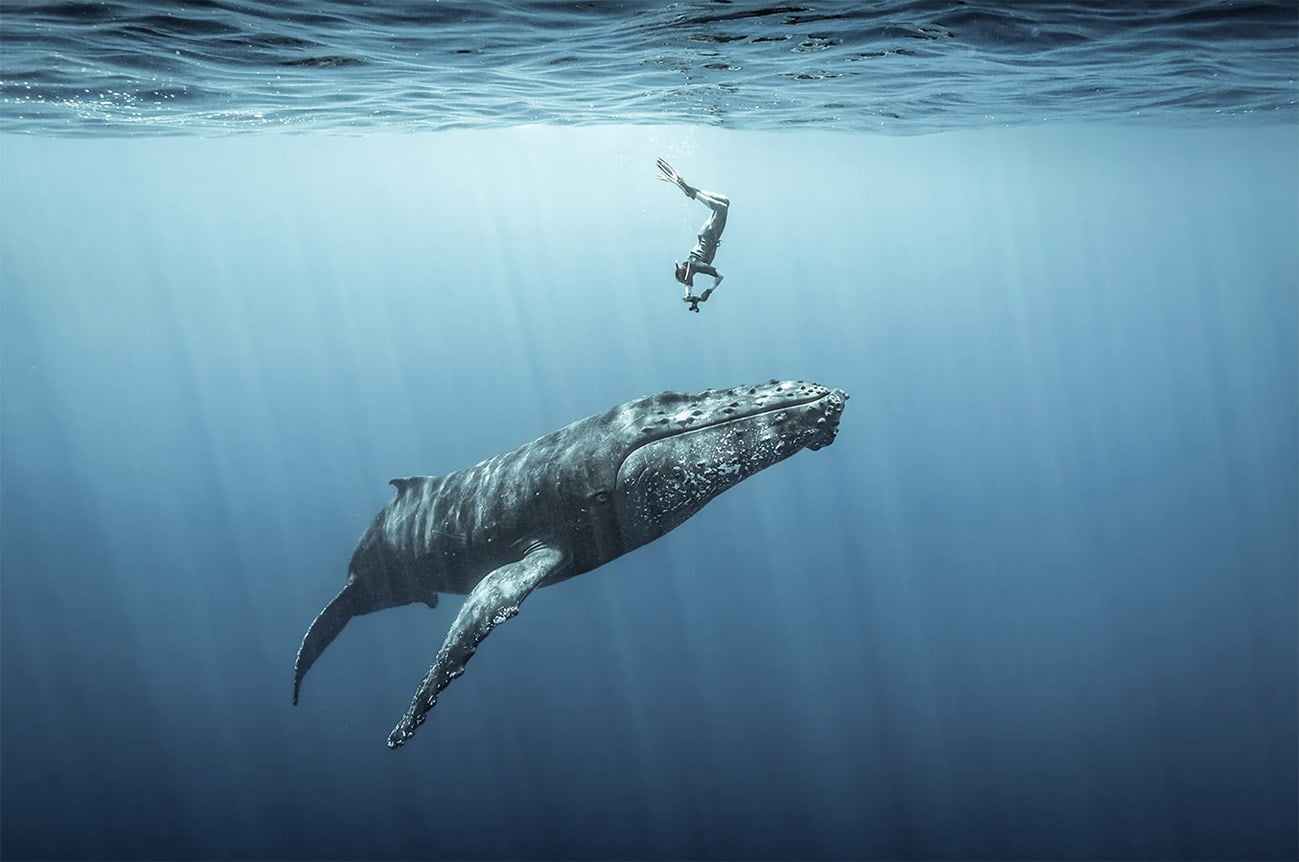Adverts
The fascinating world of underwater sounds is a spectacle that takes place far from human eyes, where whales play the role of masters of aquatic communication. In this underwater universe, communication goes beyond words, being shaped by a symphony of clicks, calls and whistles that echo across the vast expanses of the ocean. Whales, with their impressive acoustic capabilities, invite us to explore their complex social interactions and the mysteries surrounding their means of communication.
Adverts
Across the deep sea, whales communicate using an impressive array of sounds, each with a specific purpose. Some species, such as the humpback whale, are known for their elaborate songs that can last up to 30 minutes. These sounds are not mere expressions; they are intricate messages that can indicate warnings, the location of food, or even mating rituals. In addition to their songs, whales use echolocation, a kind of natural radar that allows them to navigate and hunt in murky waters, proving their incredible adaptability and intelligence.
Adverts
But how did these fascinating creatures develop such skills? And how do they maintain their complex social networks? The answer lies in the evolution of their sophisticated communication systems and the acoustic environment in which they live. This phenomenon not only reveals the ingenuity of whales, but also sheds light on the importance of the oceans as vast underwater communication networks, where every sound plays a vital role in the survival and adaptation of these aquatic giants.
The Mysterious Sound of the Oceans
When we dive into the depths of the ocean, we are enveloped by a world that seems to belong to another dimension. The abyssal waters are a realm where light rarely penetrates, but where sound reigns supreme. It is in this enigmatic environment that whales inhabit, creating underwater symphonies that defy our understanding. Unlike human vision, which is limited in murky waters, whales’ hearing is acute, allowing them to communicate, hunt and navigate with precision. But what makes these sounds so special and intriguing?
The oceans are a hub for acoustic phenomena, from the distant echoes of underwater volcanoes to the clicks and moans of whales. Each species of whale has developed its own dialect, a complex language that continues to intrigue scientists and marine enthusiasts. Some of these vocalizations can be heard thousands of miles away, weaving an acoustic web that connects whales in different parts of the world.
The Language of Whales: A Submerged Symphony
Whales, true giants of the sea, have a unique ability to communicate. They don’t just make sounds, they create a rich and varied language that allows for complex interactions. These sounds, which range from rhythmic clicks to melodic wails, are used for a variety of purposes, including orientation, hunting and socializing. But what exactly are we hearing when we pick up these enigmatic sounds?
Scientists have identified several categories of sounds made by whales. Clicks are used primarily for echolocation, helping whales map their environment and locate prey in dark waters. Songs, which are often long and melodic, have social and mating functions. Whale communication is an underwater symphony, with each species contributing its own unique repertoire.
Technology Revealing Secrets of the Abyss
With the advent of modern technology, researchers have been able to unlock some of the mysteries hidden in the depths. Hydrophones, devices that capture underwater sounds, are used to record whale vocalizations, allowing scientists to study their complex communication structures. But even with this advanced technology, many aspects of whale language remain shrouded in mystery.
The hydrophone data revealed the surprising diversity of sounds made by whales. The frequency, pattern and duration of vocalizations vary widely among species, suggesting a rich and multifaceted language. The recordings also showed that whales can modify their sounds in response to environmental changes, such as the presence of ships or other threats.
Human Impact: The Sound of Civilization
While sound is a vital tool for whale survival, human activity is making the seas an increasingly noisy world. Underwater noise generated by ships, oil rigs and military activities has a direct impact on marine life. Whales, which depend on sound for their survival, are particularly vulnerable to these disturbances.
Scientists have observed changes in whale behavior in response to increased underwater noise. Some species have altered their migration routes, while others have adjusted their vocalizations to adapt to the new acoustic environment. In some cases, noise can interfere with whales’ communication and ability to locate prey, increasing the risk of collisions with ships.
To mitigate these effects, efforts are underway to develop quieter technologies and implement noise protection zones. Raising awareness of the impact of underwater noise is essential to ensuring the preservation of whale populations and the health of the oceans.
The Future of Underwater Acoustic Research
As we continue to explore the depths of the ocean, new discoveries about whale communication are expected. With advances in artificial intelligence and data analytics, scientists are better equipped than ever to decipher the complexities of whale language. This will not only deepen our understanding of these majestic cetaceans, but also help us protect their fragile habitats.
Collaborative research projects involving scientists, conservationists and local communities are critical to the success of these efforts. Sharing knowledge and resources can accelerate the development of innovative technologies and effective conservation strategies.
Ultimately, studying whale communication offers a unique window into the mysteries of the oceans. As we delve deeper into this fascinating acoustic universe, we are reminded of the fragility and beauty of the natural world, and our responsibility to preserve it for future generations. 🌊
- Whales use clicks for echolocation and navigation in dark waters.
- Melodic songs are used in social interactions and mating.
- Human noise negatively affects whale communication and migration patterns.
- Hydrophones are essential tools for capturing and analyzing underwater sounds.
- Global collaboration is crucial to the conservation of whales and their habitats.
Conclusion
Exploring the underwater soundscape reveals a fascinating and complex world, where whales perform a spectacle of communication and interaction. These giants of the ocean use an impressive diversity of sounds to navigate, find food and, above all, communicate with each other. Their sound language is a true aquatic symphony, ranging from low-frequency calls to high-frequency clicks and whistles. With the growing interest in better understanding these marine mammals, scientists have made surprising discoveries about how whales use these vocalizations to form social bonds and transmit vital information.
Furthermore, understanding whale communication is crucial to the conservation of these species, as noise pollution in the oceans can interfere with their ability to communicate, potentially impacting their chances of survival. Therefore, by deepening our knowledge of underwater sounds, we not only enrich our understanding of marine life, but also reinforce the importance of preserving ocean habitats. 🎵 Let’s continue to protect and study these incredible creatures, ensuring that their voices can echo freely across the oceans for generations to come. 🌊 As we delve into this acoustic universe, we discover that the silence of the ocean is actually full of stories waiting to be told.




